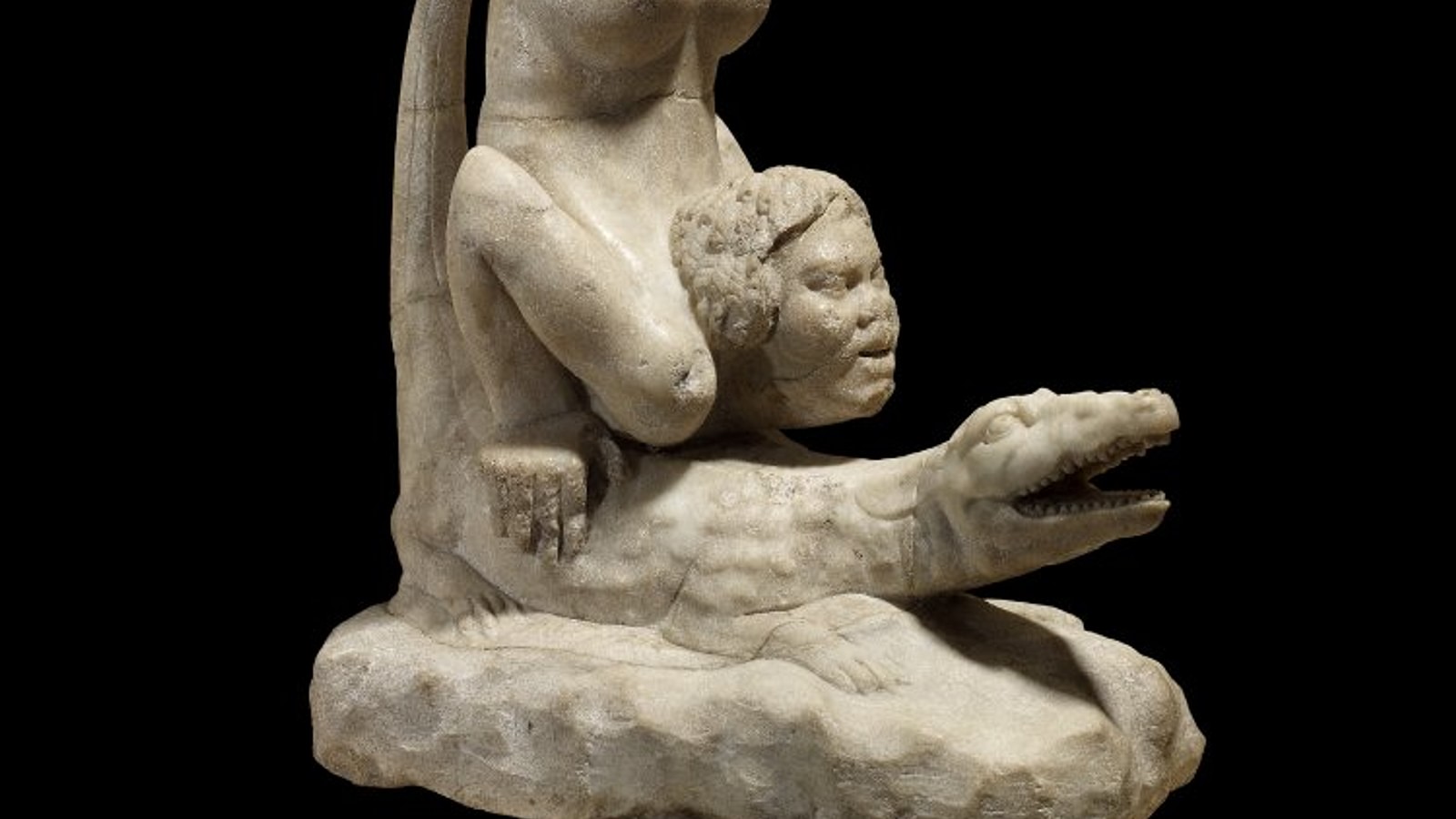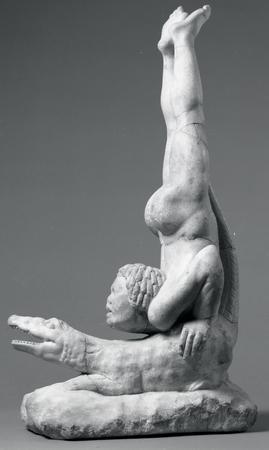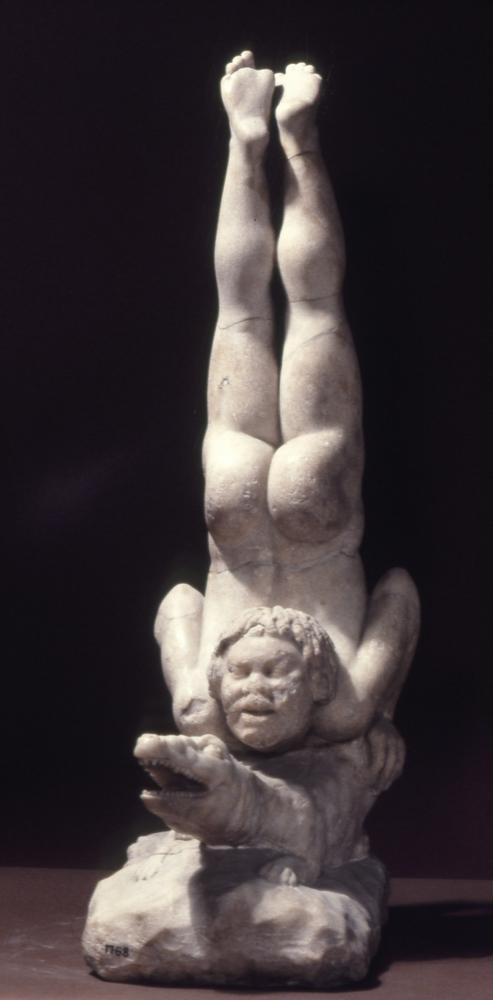Revealing Historical Wonders: Examining a Roman Marble Statue of a Juvenile Ethiopian Acrobat

Nestled within the hallowed halls of the British Museum in London lies a remarkable artifact that offers a tantalizing glimpse into the artistic and cultural milieu of ancient Rome. This marble sculpture, crafted in Rome, Italy, sometime between the 1st Century BCE and the 1st Century CE, depicts a scene both captivating and enigmatic—a young male Ethiopian acrobat poised atop a crocodile. As scholars and visitors alike gaze upon this intriguing work of art, they are transported back in time to an era of vibrant diversity and artistic innovation.

At first glance, the sculpture captivates the viewer with its exquisite craftsmanship and attention to detail. The figure of the young Ethiopian acrobat is rendered with remarkable realism, from the delicate contours of his muscular physique to the expressive features of his face. Poised in a moment of tension and balance, he exudes a sense of strength and agility that belies his youthful appearance. Balanced precariously atop the crocodile, his outstretched arms and arched back convey a sense of grace and athleticism that is both mesmerizing and awe-inspiring.
Yet, it is not only the aesthetic beauty of the sculpture that intrigues observers, but also its cultural and historical significance. The portrayal of a young Ethiopian acrobat challenges conventional notions of race and identity in ancient Rome, offering a rare glimpse into the multicultural fabric of the Roman Empire. In a society often characterized by its hierarchical social structures and strict divisions of class and ethnicity, the presence of an Ethiopian protagonist in a work of art speaks to the diverse and cosmopolitan nature of Roman society.

The symbolism of the crocodile, too, adds a layer of complexity to the sculpture’s interpretation. In ancient Egyptian and Greco-Roman mythology, the crocodile was often associated with the Nile River and the divine forces of nature. As a creature of both land and water, it symbolized the liminal space between the earthly and the divine—a theme that resonated deeply with the religious and philosophical beliefs of the ancient world. By depicting the Ethiopian acrobat in harmony with the crocodile, the sculptor invites viewers to contemplate the interconnectedness of humanity and the natural world.
The provenance of the sculpture further enriches its narrative, offering clues to its historical context and significance. Discovered in Rome, Italy, the sculpture likely adorned the villa or public space of a wealthy patron, serving as a symbol of status and cultural sophistication. Its presence in the British Museum today speaks to the enduring legacy of the Roman Empire and its contributions to the art and culture of the ancient world.

As scholars continue to study and interpret the sculpture, they are confronted with questions that defy easy answers. Who was the young Ethiopian acrobat, and what story does his portrayal seek to convey? What was the cultural and social significance of depicting a black African protagonist in ancient Roman art? These questions, while tantalizing, remind us of the complexities of history and the multiplicity of voices that have shaped our understanding of the past.
In the end, the marble sculpture of the young Ethiopian acrobat remains a testament to the enduring power of art to transcend boundaries and bridge cultures. As visitors to the British Museum gaze upon its timeless beauty, they are invited to contemplate the richness and diversity of the human experience, spanning continents and centuries. In its enigmatic presence, the sculpture serves as a reminder of the boundless potential of art to inspire, provoke, and unite us in our shared journey through time.